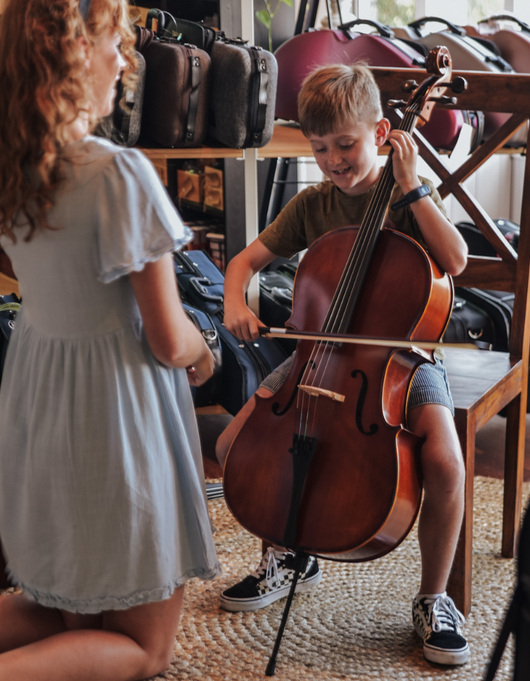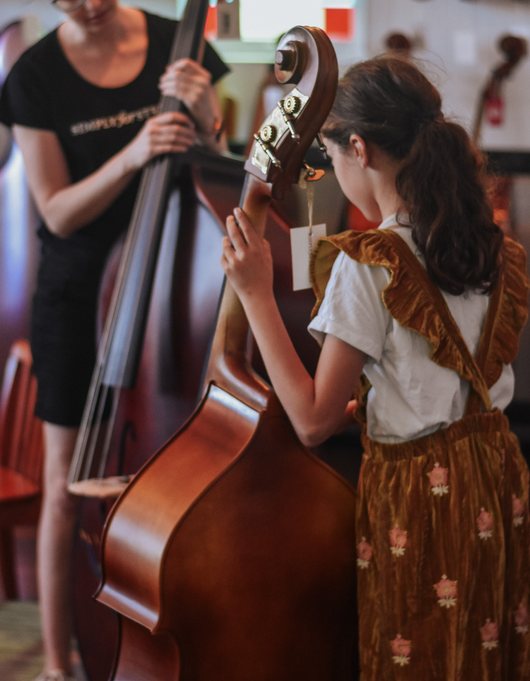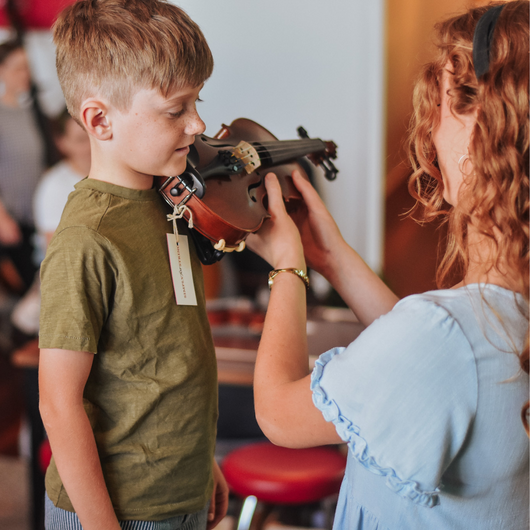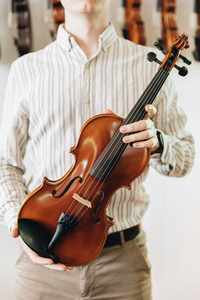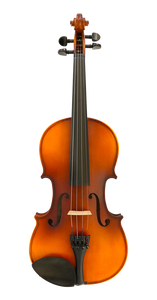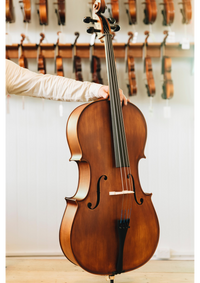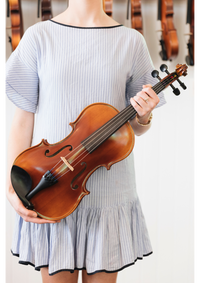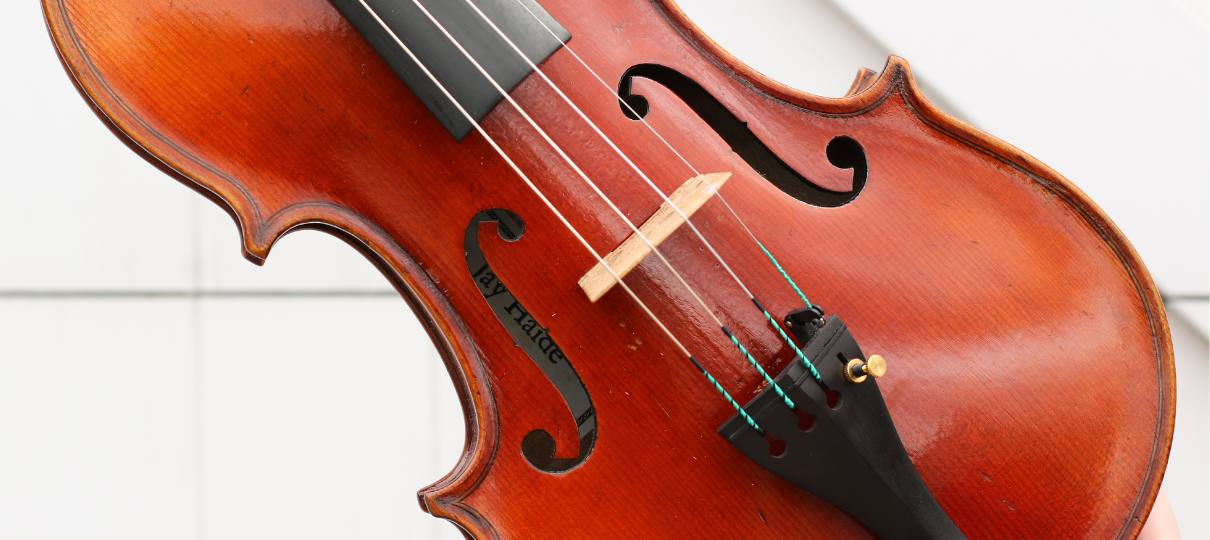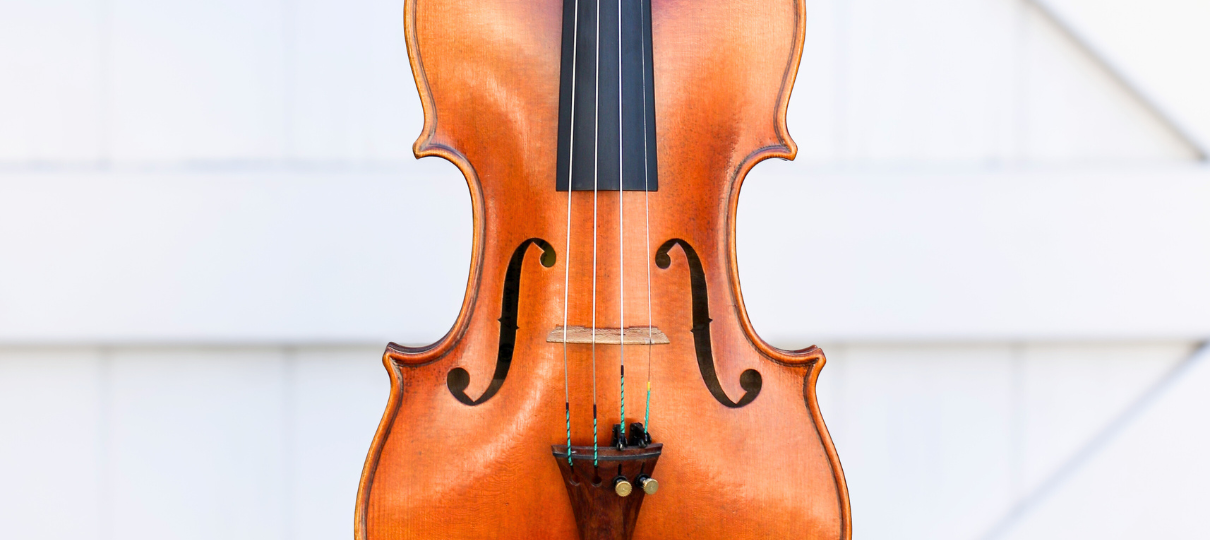This guide is intended to give you a rough idea of the size of instrument you or your child will require. Please note that this is a rough guide only. For best results, you should consult with our string experts or your teacher before purchasing or renting.
One of the most important tasks we find ourselves undertaking at Simply for Strings is to size a student for their instrument. Whilst we always check sizing when you purchase an instrument, it is also important to talk to your teacher first about their thoughts on the appropriate size instrument. It is important to remember that we always err on the side of caution when it comes to instrument sizing. Unlike clothes, you cannot ‘grow into’ an instrument. If the instrument is too large then you will find yourself in severe pain when practising or performing. This often leads to a decrease in practice (and interest), which inevitably leads to the player choosing to forgo learning an instrument. Play pain-free and start with the right size violin, viola, cello or double bass from Simply for Strings.
Measuring Guide for Violin & Viola
Measure in centimeters from the neck to the middle of the palm.
Directions for Measuring: With the player’s arm fully extended and parallel to the floor, measure in centimetres from the neck to the middle of the palm.
Violin Size Guide
| 1/16 | 35 - 38 CM | 3 - 4 YRS |
| 1/10 | 39 - 42 CM | 4 - 5 YRS |
| 1/8 | 43 - 46 CM | 5 - 6 YRS |
| 1/4 | 47 - 51 CM | 6 -7 YRS |
| 1/2 | 52 - 56 CM | 7 - 8 YRS |
| 3/4 | 57 - 60 CM | 9 - 11 YRS |
| 4/4 | > 60 CM | 11 - 13+ YRS |
Shop our extensive range of beginner to advanced violins.
Viola Size Guide
| 12" | 53 - 55 CM |
| 13" | 55 - 59 CM |
| 14" | 59 - 63 CM |
| 15" | 63 - 65 CM |
| 15" 1/2 | 65 - 67 CM |
| 16" | >67 CM |
Shop our extensive range of beginner to advanced violas.
Measuring Guide for Cellos
Directions for Measuring: Sizing cellos is slightly more complicated than sizing violins and violas. The student should be seated at the edge of a chair such that the knees are bent at a ninety-degree angle (feet flat on the floor). The upper edge (back of cello near where the neck joins the body) of the instrument should rest in the centre of the chest (on the sternum) and the C peg should be slightly behind the left ear. The knees should lightly grip the lower bouts ensuring that the corners do not dig into the side of legs. (Corners should be slightly above the inside of the knees). The student should be able to reach both ends of the fingerboard with ease. The chart below shows approximate sizing by age.
Note: 7/8 size cellos are available as well. This can be a useful transitional size or a more comfortable option for those players who prefer a slightly smaller instrument.
Cello Size Guide
| 1/10 | 4 - 5 YRS |
| 1/8 | 5 - 6 YRS |
| 1/4 | 6 - 8 YRS |
| 1/2 | 8 - 10 YRS |
| 3/4 | 10 - 12 YRS |
| 4/4 |
12 - 13+ YRS |
Shop our extensive range of beginner to advanced cellos.
Measuring Guide for Double Bassists
Directions for Measuring: The 3/4 size double bass is the standard size for adults. 7/8 size basses and 4/4 sizes basses are made but they are less commonly used. As a rough guideline, when both the bass and the player are standing upright, the bridge should be approximately at the same height as the large knuckles of the student's right hand. The most important issue is that the instrument is comfortable and that the student can reach the higher registers of the fingerboard without difficulty.
The chart below shows approximate sizing by age.
| 1/16 | 3 - 4 YRS |
| 1/10 | 4 - 5 YRS |
| 1/8 | 5 - 7 YRS |
| 1/4 | 7 - 9 YRS |
| 1/2 | 9 - 13 YRS |
| 3/4 | 13+ YRS |
Shop our extensive range of beginner to advanced double basses.
Need extra assistance? No problem! Contact our string experts today.





